Even in a digital world, neat handwriting still matters – it boosts memory by 25% and reflects your personal identity. Here’s how to improve it today:
The tools you use can make a big difference in how your handwriting looks. Selecting the right pens and paper can give your writing a polished and professional touch.
The type of pen you choose can impact your writing experience. Each pen type has its own strengths, so understanding these differences can help you pick the best one for your needs.
| Pen Type | Best For | Key Benefits | Watch Out For |
|---|---|---|---|
| Ballpoint | Everyday writing | Quick-drying, smudge-resistant | Requires more pressure |
| Gel | Detailed notes | Smooth flow, vibrant colors | Longer dry time |
| Rollerball | Extended writing | Reduces hand strain | May bleed through paper |
One popular choice for journaling is the Pentel Energel, known for its smooth ink and quick drying time. Joy Margot from Nikki’s Supply Store shares:
"I cannot overstate how much I LOVE THESE PENS! They have the smoothest, glossiest ink, which dries incredibly quickly. They’re really comfortable to use, and they make my handwriting look so much better."
Here are a few other pen recommendations to try:
Pair these pens with high-quality paper to further improve the clarity and consistency of your handwriting.
The paper you write on is just as important as the pen. Good paper prevents ink from bleeding and ensures your lines stay crisp.
When choosing paper, consider these features:
Left-handed writers may benefit from more absorbent paper to reduce smudging. On the other hand, if you’re using pens with extra-fine nibs, less absorbent paper can help maintain sharp, clean lines.
For fountain pens or other wet-writing tools, premium papers like Tomoe River are excellent for showcasing ink qualities, though they might require longer drying times. For everyday use, standard quality paper with proper sizing can keep your writing neat and free from ink bleeding.
The way you sit and hold your pen can make a big difference in reducing hand fatigue and improving control. These small adjustments can help your handwriting look cleaner and more polished.
Your posture plays a key role in maintaining control and preventing strain. Here’s how to position yourself:
| Body Part | Correct Position | Why It Matters |
|---|---|---|
| Feet | Flat on the floor with knees at a 90° angle | Provides a stable base for balance |
| Back | Straight with a slight lean toward the desk | Minimizes strain on muscles |
| Arms | Forearms resting on the desk, elbows bent at 90° | Helps with steady and controlled movements |
| Paper | Angled slightly toward your dominant hand | Makes writing smoother and more natural |
"Maintaining good posture ensures your body is in good alignment and that stress on your muscles, joints and ligaments are distributed evenly across your body."
Don’t forget to take regular breaks to avoid fatigue and maintain your posture over time. A solid posture is the foundation for improving your pen grip.
How you hold your pen impacts both comfort and precision. Try one of these two common grips:
Avoid gripping too tightly, as this can cause tension and fatigue. Instead, focus on using your arm and shoulder muscles for pen movement rather than relying solely on your fingers. This approach keeps your hand relaxed while improving control.
Improving your handwriting involves developing consistent letter shapes and ensuring it stays readable, even when writing quickly. Studies show that practicing handwriting can boost both its quality and your writing fluency. Interestingly, handwriting taps into more complex motor and cognitive skills compared to typing.
Pay attention to three key aspects: size, height, and slant:
| Aspect | Technique | Benefit |
|---|---|---|
| Size | Reduce letter size by 10-15% | Helps you write faster while keeping it readable |
| Height | Make letters taller and narrower | Minimizes slow horizontal movements |
| Slant | Keep the angle consistent | Gives your writing a polished, professional look |
Use lined paper to practice individual letters, applying these techniques to develop better control and consistency as your speed increases.
Striking a balance between speed and neatness takes practice. Here’s how to get there:
"The automatic production of strokes, letters and words frees up mental resources for the process of composing or the understanding of the content of texts or lessons. Therefore, the consideration of fluency or automaticity of handwriting in national curricula appears to be necessary if not mandatory." – Tucha et al
Regular, focused practice not only sharpens your handwriting but also aids in retaining information. Over time, you’ll develop a consistent style that stays neat, even under time pressure.
Improving your handwriting takes consistent, daily effort. Regular practice builds muscle memory, making your writing smoother and more polished over time. Below, we’ll look at simple exercises and ways to track your progress effectively.
Short daily sessions can do wonders for building muscle memory and sharpening your skills. Try these exercises:
| Exercise Type | Duration | Focus Area | Technique |
|---|---|---|---|
| Word Sprints | 10–15 mins | Flow and Speed | Write nonstop, focusing on speed over perfection. |
| Letter Drills | 5 mins | Form and Consistency | Repeat individual letters to master their shapes. |
| Prompt Writing | 15 mins | Creative Expression | Use prompts to make practice more engaging. |
| Stuck Word Practice | 5–10 mins | Rhythm and Flow | Choose a word and repeat it to build rhythm. |
Pair these exercises with good tools for the best results. For instance, the Handwriting Success App ($3.99/month) offers structured practice and tracks your progress. Another popular option is Graceful By Design‘s Reusable Grooved Handwriting Workbooks ($50.00), which have a 4.77/5 rating from users. After each session, review your work to spot areas that need improvement.
Tracking your progress is key to understanding what’s working and where you need to focus more.
For extra guidance, you might try digital tools like the Getty-Dubay® Italic Handwriting Program ($8.99/year), which provides structured feedback to highlight areas that need work.
Create a handwriting style that’s both professional and reflective of your personality. This section will guide you through analyzing your current writing and refining it into a style that’s uniquely yours while staying easy to read.
The first step is understanding your handwriting habits. Pay attention to these key aspects:
| Element | What to Look For | What It Reveals |
|---|---|---|
| Letter Shape | Roundness or straight lines | Indicates tension or relaxation |
| Spacing | Gaps between letters and words | Reflects organization and thought flow |
| Slant | Left, right, or neutral | Shows emotional nuances |
| Size | Large or small letters | Suggests boldness or modesty |
| Baseline | Upward, downward, or straight | Reflects outlook and stability |
Take a sample of your regular handwriting and evaluate these elements. Consistency in letter forms is key to keeping your writing neat and legible. Use these insights to pinpoint areas for improvement and start shaping your personal style.
Once you’ve reviewed your handwriting, you can tweak specific elements to make it more expressive while still clear. Here’s how to get started:
Consistency is crucial – keep letter sizes uniform and ensure proper spacing between words. Practicing on lined paper can help you maintain even baselines and balanced proportions.
For daily practice, try writing sentences or pangrams that include all 26 letters of the alphabet. The classic "The quick brown fox jumps over the lazy dog" is perfect for honing each letter while adding a touch of your own flair.

Dark Moon Paper’s planning supplies bring a mix of style and practicality to your handwriting. These tools are perfect for keeping your writing neat and polished. Start with their themed sticker sets, then check out their planning tools designed to help you write more clearly and professionally.
Dark Moon Paper’s sticker kits are not just decorative; they help improve the look and structure of your writing. Collections like "Lilac Dusk" and "Electric Forest" include elements that assist with spacing, alignment, and overall presentation.
| Sticker Type | Purpose | How It Helps |
|---|---|---|
| Header Labels | Organizes your pages | Defines writing spaces |
| Guide Dots | Marks alignment points | Keeps letter height even |
| Decorative Borders | Frames your pages | Sets boundaries for writing |
| Checklist Boxes | Tracks tasks | Guides list formatting |
Dark Moon Paper goes beyond stickers, offering premium tools that make writing smoother and more refined. Their notebooks feature high-quality paper that resists ink bleed and feathering, ensuring clean, sharp lines.
Here are some tips for getting the most out of their planning tools:
Founder Rachael Snow has blended artistic design with functional planning tools to inspire better handwriting and organized thoughts. Their weekly planners, for example, provide ample space for practicing your writing while maintaining a professional layout.
For a cohesive look, explore their coordinated sets like the "Driftwood Tones" series. These sets include monthly, weekly, and daily planners, helping you maintain consistent handwriting and a polished style across all your planning needs.
Improving your handwriting takes the right tools, techniques, and regular practice. Handwriting expert Dee Quine emphasizes:
"To achieve neat, legible handwriting, there are three main tips to keep in mind: slow down, aim for consistency in your letter forms, and practice".
Using tools that suit your style, maintaining proper posture, and holding your pen with a relaxed grip are key to forming clear, consistent letters. These basics lay the groundwork for better spacing and overall neatness.
Legible handwriting not only shows respect for your readers but also ensures your message is understood. By practicing daily – focusing on letter shapes, spacing, and gradually increasing speed – you’ll see steady improvement in both clarity and consistency.
Each practice session helps refine your handwriting and enhances how you express yourself in both personal and professional settings. With commitment to these simple principles, you can develop a writing style that’s clear, polished, and uniquely yours.
Stickers Made for Planning
Our custom stickers are a fuss-free way to brighten up your planner pages with perfectly-sized designs that add a spark of personality to every layout.
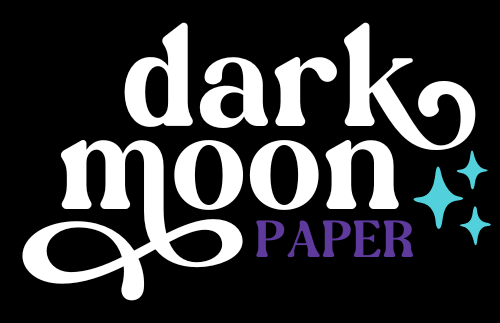
Why use planner stickers?
Planner stickers make organizing easy, fun, and personal! Add color, creativity, and structure to every page, transforming your planner into a tool that reflects you. Perfect for tracking, decorating, and staying inspired daily!
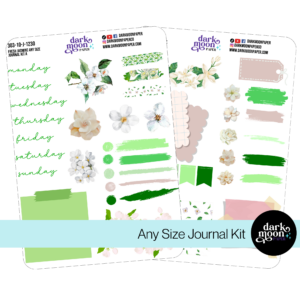
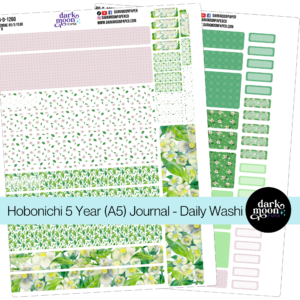
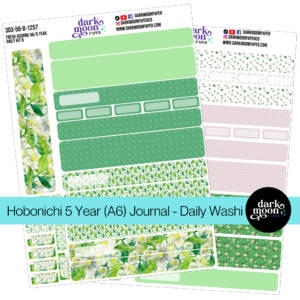
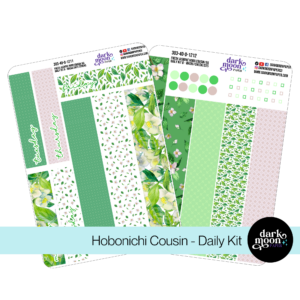

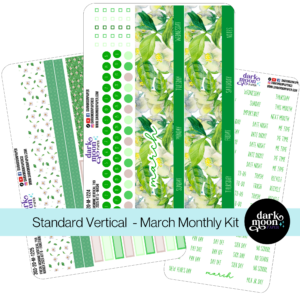

Hello and welcome!
I’m Rachael Snow, a lifelong artist and entrepreneur, and I started Dark Moon Paper to blend my love of art, technology, and the mysterious beauty of the world around us. My sticker kits are meant to set the mood, tell a story, and give you a little escape from the ordinary.
I work from my cozy studio tucked away in the beautiful woods of Oregon, surrounded by nature and a dark night sky full of stars.